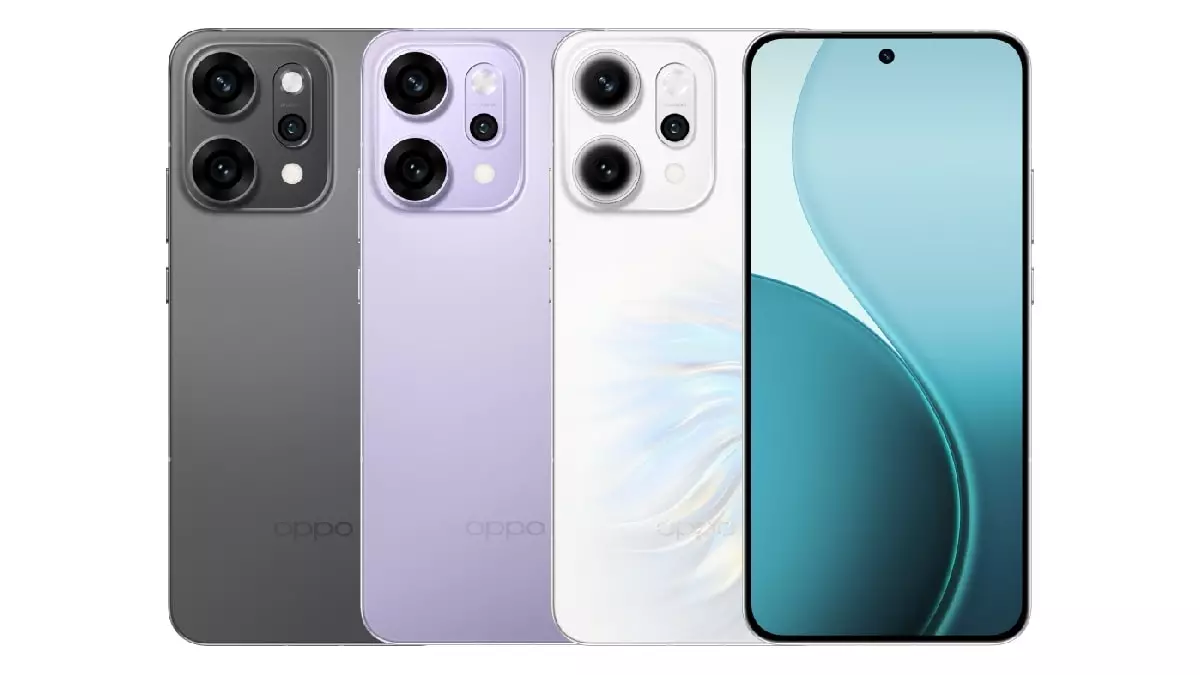The much-anticipated Oppo Reno 14 5G series is finally making its debut in India, a move that seems promising at first glance. Oppo, a brand often praised for its innovative designs and feature-packed devices, positions these phones as a new flagship-level offering. However, a closer look reveals a landscape filled with the familiar allure of high-end specifications often accompanied by questionable ambitions. While the company touts advanced AI features, cutting-edge camera capabilities, and impressive display hardware, one cannot help but scrutinize whether these advancements are genuine progress or cleverly marketed illusions masking stagnation.
This series, which follows the Chinese launch in May and a recent debut in Malaysia, faces the challenge of convincing Indian consumers that its latest models are worth their investment amid an increasingly crowded mid-range segment. The fact that Oppo is choosing to stream its launch event live hints at a desire to create hype, but does hype translate into value? As tech enthusiasts and casual consumers alike await the official prices, skepticism lingers about whether Oppo will deliver a truly compelling package or just another incremental upgrade dressed in premium styling.
Design and Display: Aesthetic Appeal Over Practicality?
The Oppo Reno 14 and Reno 14 Pro models promise visually appealing designs with robust OLED screens, marked by a 1.5K resolution, 120Hz refresh rate, and impressive brightness levels. These specifications are undeniably appealing, especially with Oppo’s emphasis on Crystal Shield Glass, which suggests a focus on durability. Yet, the design philosophy appears heavily reliant on the “wow factor” rather than functional innovation. The sizes, ranging from 6.59 inches to 6.83 inches, cater to a trend of larger displays, but in doing so, risk alienating users looking for compactness or better ergonomics.
Moreover, high refresh rates and bright screens are standard now, often touted as premium features. The question is whether these hardware choices are enough to differentiate Oppo from other brands that offer similar or superior specifications at comparable prices. The real problem is that good looks and high-end screens do little if the core experience — usability, longevity, and meaningful innovation — are compromised or simply recycled annually.
Performance and Software: Just Enough to Keep Up?
The series is powered by MediaTek’s Dimensity chips—specifically the 8350 and 8450—paired with up to 16GB of RAM and 1TB of storage. While these specs promise smooth multitasking and ample storage, they also underscore the overemphasis on hardware numbers that may not translate into user-centric advantages. The inclusion of ColorOS 15 based on Android 15 indicates a desire to keep user experience fresh, but it does little to dispel concerns over software bloat, privacy issues, or sluggish updates that have plagued Oppo devices in the past.
Furthermore, the AI features — from AI Recompose to AI Voice Enhancer — sound impressive in theory. But how much do they genuinely alter everyday interaction? And more critically, do they enhance user experience, or are they just buzzwords to distract from underwhelming core functionalities? In many cases, such features tend to be gimmicks rather than meaningful additions, especially if they are not seamlessly integrated or if they excessively drain battery life.
Camera Capabilities: Overhyped or Underwhelming?
The camera setup is perhaps the most aggressively marketed aspect of the Reno 14 series. The standard model boasts a triple rear camera, with a 50MP main sensor, a telephoto lens with 3.5x optical zoom, and an ultra-wide shooter. The Pro variant goes further with four lenses, including three 50MP sensors and a periscope telephoto lens. While these specs suggest professional-grade photography, the reliance on high-megapixel counts often masks mediocre actual image quality.
The use of Sony sensors is a positive sign, but the true test lies in computational photography, image processing, and low-light performance — aspects not fully addressed in leaks or teasers. High-megapixel sensors do not automatically equate to better photos, especially if software optimization is lacking. It’s easy for Oppo to shout about ‘quad-camera systems’ and ‘50MP sensors,’ but the real question is whether these cameras offer a tangible improvement in everyday use or if they merely serve as marketing millstones.
Battery Life and Charging: A Mixed Bag?
Battery capacity is often overlooked in favor of flashy features, yet it remains the backbone of smartphone usability. The Oppo Reno 14’s 6,000mAh battery and the Pro model’s larger 6,200mAh capacity seem promising, especially with fast charging touted at 80W and 50W wireless support. However, high battery capacities do not always translate into lasting performance if fueled by inefficient hardware or software.
Furthermore, wireless charging, considered a luxury feature by many, isn’t always a practical necessity. The emphasis on rapid charging, while appealing, raises questions about long-term battery health and whether Oppo is prioritizing quick fixes over sustainable performance. Consumers deserve devices that can reliably last a full day without begging for quick recharge solutions that subtly push them towards more frequent purchases or upgrades.
—
From a critical standpoint, the Oppo Reno 14 series appears to toe the line between genuine innovation and marketing hype. It’s easy to be seduced by the shiny specs and AI buzzwords, but beyond the surface lies a familiar pattern: high-tech features that may not significantly improve daily user experience. For a brand attempting to carve a distinct identity in an overly saturated market, Oppo must prove that these devices are more than just attractive packages; they must embody thoughtful, meaningful progress or risk being dismissed as just another iteration in a long line of incremental upgrades.


Leave a Reply